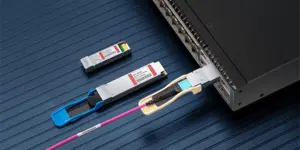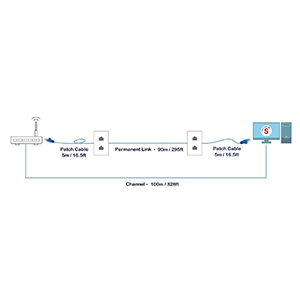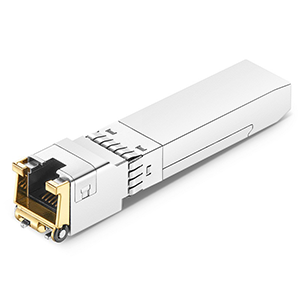Cat6 network cables are widely used in modern networks. This article will explore the main types of Cat6 network cables. We will first define the technical specifications of Cat6 network cables and explain its advantages in network applications, such as providing higher transmission rates and bandwidth, as well as stronger anti-interference and signal integrity. Next, we will introduce the three main types of Cat6 ordinary network cables, Cat6 shielded network cables, and Cat6 enhanced network cables.
Cat6 ordinary network cables use unshielded twisted pair structures and are suitable for general home and office environments; Cat6 shielded network cables use twisted pair cables with shielding layers and are suitable for environments that are prone to interference; while Cat6 enhanced network cables use higher quality conductors and shielding layers, support 10GBASE-T full-duplex mode, and are suitable for the interconnection of high-speed network devices.
Basic Overview of Cat6 Network Cables
Cat6 network cables are high-performance Ethernet cables that support transmission speeds of up to 10 Gbps and are suitable for network connections within 100 meters. It has better anti-interference ability and higher bandwidth than Cat5e network cable, and is suitable for high-speed network and data transmission. It is commonly used in office and home network environments.
Technical specifications of Cat6 network cable:
Cat6 network cable (Category 6 Ethernet Cable) is a high-performance Ethernet cable, and its technical specifications mainly include:
(1) Transmission bandwidth up to 1000Mbps:
- Cat6 network cable can support transmission rates up to 1000Mbps (1Gbps).
(2) Support from 10BASE-T to 10GBASE-T network:
- Cat6 network cable can support network standards from 10Mbps 10BASE-T to 10Gbps 10GBASE-T.
In short, Cat6 network cable has high performance indicators in bandwidth and transmission rate, meeting various network requirements from Gigabit Ethernet to 10 Gigabit Ethernet.
Advantages of Cat6 network cable in network applications:
Compared with earlier network cable standards, Cat6 network cable has the following advantages in network applications:
(1) Providing higher transmission rate and bandwidth:
- Cat6 network cable can support up to 1Gbps transmission speed, meeting the needs of current high-bandwidth applications.
(2) Stronger anti-interference and signal integrity:
- Cat6 network cable adopts a more optimized shielding and twisted wire design, which can better resist electromagnetic interference and ensure signal integrity.
With these advantages, Cat6 network cable is widely used in small and medium-sized enterprise networks, home broadband access, data centers and other scenarios, becoming one of the current mainstream Ethernet cable standards.
Cat6 ordinary network cable
Cat6 ordinary network cable is a commonly used Ethernet cable that supports network speeds up to 1 Gbps and a bandwidth of 250 MHz, suitable for most home and office networks. It has strong anti-interference capabilities and is suitable for standard LAN connections.
Basic features of Cat6 ordinary network cable:
Cat6 ordinary network cable is a common Cat6 series network cable, which has the following basic features:
(1) Adopting unshielded twisted pair (UTP) structure:
- Cat6 ordinary network cable uses unshielded twisted pair (UTP) as the transmission medium.
(2) Suitable for general home and office environments:
- Cat6 ordinary network cables are suitable for general home and office network environments, and do not require special cable deployment requirements.
Compared with shielded Cat6 network cables, ordinary network cables are more economical and practical in terms of deployment and cost.
Main application scenarios of Cat6 ordinary network cables:
Cat6 ordinary network cables are widely used in the following typical scenarios:
(1) Interconnection between devices in a local area network:
- In home and small and medium-sized office networks, Cat6 ordinary network cables are used to connect various terminal devices, such as computers, printers, routers, etc.
(2) Information transmission based on Ethernet:
- Cat6 ordinary network cable can be used for various information transmission applications based on Ethernet technology, such as Internet access, file sharing, remote access, etc.
Thanks to the excellent performance of Cat6 network cable, the ordinary version is also sufficient to meet the network connection needs of most home and small and medium-sized office scenarios. In short, Cat6 ordinary network cable is widely used in LAN device interconnection and various information transmission scenarios based on Ethernet due to its simple and practical characteristics.
Cat6 shielded network cable
Cat6 shielded network cable adds a shielding layer on the basis of ordinary Cat6 network cable, which can effectively prevent electromagnetic interference and signal crosstalk. It supports transmission speeds up to 10 Gbps and bandwidth of 250 MHz, and is suitable for high-speed network connections in high-interference environments.
Basic structure of Cat6 shielded network cable:
Different from ordinary Cat6 network cable, Cat6 shielded network cable (Shielded Twisted Pair, STP) has the following basic structural characteristics:
(1) Using twisted pair with shielding layer:
- Cat6 shielded network cable uses twisted pair structure with shielding layer.
- This shielding layer can effectively block external electromagnetic interference.
(2) Provide stronger anti-interference performance:
- The addition of shielding layer makes Cat6 shielded network cable have stronger anti-interference ability.
- This can effectively prevent network transmission from being interfered by the external environment.
Main advantages of Cat6 shielded network cable:
Compared with ordinary Cat6 network cable, shielded network cable has obvious advantages in the following aspects:
(1) Suitable for environments prone to interference:
- In environments prone to interference such as industrial sites and medical equipment, shielded network cables can better resist interference.
(2) Improve the reliability of network transmission:
- Shielded network cables can ensure the integrity and reliability of network signals and reduce the risk of transmission errors.
- This is especially important in scenarios with high requirements for transmission quality.
In short, Cat6 shielded network cable, with its unique twisted pair shielding structure, can provide stronger anti-interference performance, suitable for complex environments prone to interference, and improve the reliability of network transmission.
Cat6 Augmented Network Cable
Cat6 Augmented Network Cable is optimized based on standard Cat6 and supports higher data transmission speed and bandwidth, usually up to 10 Gbps and 500 MHz bandwidth. It has improved anti-interference performance and higher transmission stability, suitable for demanding network environments.
Features of Cat6 Augmented Network Cable:
Cat6 Augmented Network Cable is further optimized and enhanced based on the basic Cat6 network cable specifications. It has the following outstanding features:
(1) Using higher quality wires and shielding layers:
- Cat6 Augmented Network Cable uses better quality wire materials and more complete shielding design.
- These improvements ensure better signal transmission performance and anti-interference capabilities.
(2) Support 10GBASE-T full-duplex mode:
- Cat6 enhanced network cable can support 10Gbps 10GBASE-T full-duplex network standard.
- This provides a guarantee for the interconnection between high-speed network devices.
Compared with ordinary Cat6 network cables, the enhanced version has significantly improved technical indicators and performance.
Application scenarios of Cat6 enhanced network cables:
Thanks to its excellent performance parameters, Cat6 enhanced network cables are mainly used in the following scenarios:
(1) Interconnection between high-speed network devices:
- In scenarios where 10Gbps Ethernet needs to be supported, Cat6 enhanced network cables can achieve fast interconnection between high-speed devices.
(2) Data center and backbone network applications:
- Data centers and high-speed backbone networks have high requirements for network cable performance, and Cat6 enhanced network cables can meet these requirements.
- It can ensure high speed, reliability and stability of network transmission.
In short, Cat6 enhanced network cables are widely used in interconnection between high-speed network devices and scenarios such as data centers and backbone networks due to their higher quality materials and stronger performance indicators.
Summary
Different types of Cat6 network cables have their own characteristics and can meet the needs of different network application scenarios. Our company has long focused on the research and development and application of network infrastructure technology and has rich practical experience. We provide a full range of Cat6 network cable products, including ordinary network cables, shielded network cables and enhanced network cables, which are widely used in various network environments such as enterprises, data centers, and operators.
Our network cable products adopt industry-leading technical solutions and have achieved excellent levels in transmission performance, reliability and environmental adaptability. At the same time, our engineering team will provide you with professional demand analysis and solution design services to ensure that the deployed network cable solutions can meet your actual needs to the greatest extent. Contact us now to learn more.
cat6 cable FAQ
A Cat6 (Category 6) cable is a type of Ethernet cable used for network connections, offering higher data transmission speeds and reduced interference compared to earlier standards like Cat5e.
The main types of Cat6 cables include UTP (Unshielded Twisted Pair), STP (Shielded Twisted Pair), and FTP (Foiled Twisted Pair). Each type offers different levels of shielding and protection against interference.
UTP Cat6 cables do not have any shielding and rely on the twisted pair design to reduce interference. STP Cat6 cables include additional shielding, which helps to protect against external electromagnetic interference (EMI).
Cat6a (Augmented Category 6) cables support higher data transmission speeds (up to 10 Gbps) and longer distances (up to 100 meters) compared to standard Cat6 cables, which are typically limited to 1 Gbps over 100 meters.
Shielded Cat6 cables should be used in environments with high levels of electromagnetic interference, such as industrial settings or areas with a lot of electronic equipment. The shielding helps to prevent signal degradation.
Solid Cat6 cables have a single, solid conductor per wire, making them ideal for long, fixed installations. Stranded Cat6 cables consist of multiple strands of wire per conductor, making them more flexible and suitable for shorter, movable connections.
Yes, there are outdoor-rated Cat6 cables, which are designed to withstand harsh environmental conditions, including UV exposure, moisture, and temperature variations. These cables are typically made with a more durable jacket material.
Plenum-rated Cat6 cables are designed for installation in air circulation spaces (plenum spaces) and have fire-resistant jackets to reduce the spread of flames and smoke. Riser-rated cables are used for vertical runs between floors and have a lower fire resistance than plenum cables.
Yes, Cat6 cables can support Power over Ethernet (PoE), allowing both data and electrical power to be transmitted over the same cable to devices like IP cameras, phones, and wireless access points.
Consider factors such as the installation environment (indoor, outdoor, plenum, riser), the presence of electromagnetic interference, required data transmission speeds, and whether PoE support is needed. This will help you determine whether to use UTP, STP, FTP, solid, stranded, or other specialized Cat6 cables.




